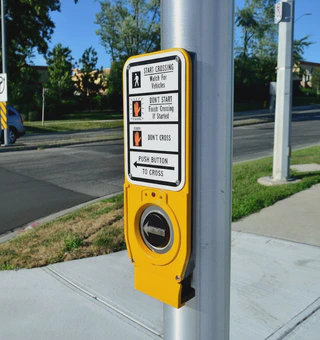Accessible Pedestrian Signals for Tehran
 Image credit: Reza Mahmoudi
Image credit: Reza Mahmoudi
Table of Contents
Overview
CLIENT
Municipality of Tehran
LOCATION
Tehran, Iran
Role
System Engineer
Markets
Transportation Market
Solutions
Accessible Pedestrian Signals
Walking
Active Transportation
Regions
Greater Tehran Area
Our Client’s Challenge
Tehran is the capital and largest city of Iran, serving as both the capital of Tehran Province and the administrative center for Tehran County and its Central District. With a population of approximately 9.8 million within the city and 16.8 million in the metropolitan area, Tehran is the most populous city in Iran and Western Asia, the second-largest metropolitan area in the Middle East after Cairo, and the 24th most populous metropolitan region in the world.
Unfortunately, more than half of traffic accident fatalities in Tehran involve pedestrians. A key contributing factor is that many intersections in the city lack accessible pedestrian signals. Decision-makers believed that installing such systems could significantly reduce fatalities but sought to conduct a feasibility study to evaluate the project’s alignment with budget constraints and its potential effectiveness.
This project focused on several key objectives:
- Translation: Translating technical reports on successful pedestrian-safety projects implemented in other cities worldwide into Persian.
- Technology Identification: Identifying various accessible pedestrian signal technologies, along with their features and associated costs.
- Site Selection: Identifying potential intersections within Tehran that would serve as the most suitable candidates for implementing accessible pedestrian signals as pilot projects.
Outcomes
- Translated multiple technical reports from several Australian cities and identified various accessible pedestrian signal technologies along with their associated costs.
- Analyzed and mapped extensive crash datasets to identify intersections with the highest crash risk and pedestrian fatality potential.
- Conducted public outreach, particularly engaging the blind and visually impaired community, to gather feedback on the project and understand how it could improve safety and accessibility.
- Identified several intersections with the greatest potential to benefit from the installation of accessible pedestrian signals.
- Prepared a comprehensive technical report summarizing the feasibility study and held multiple workshops to present findings and recommendations to city managers and decision-makers.